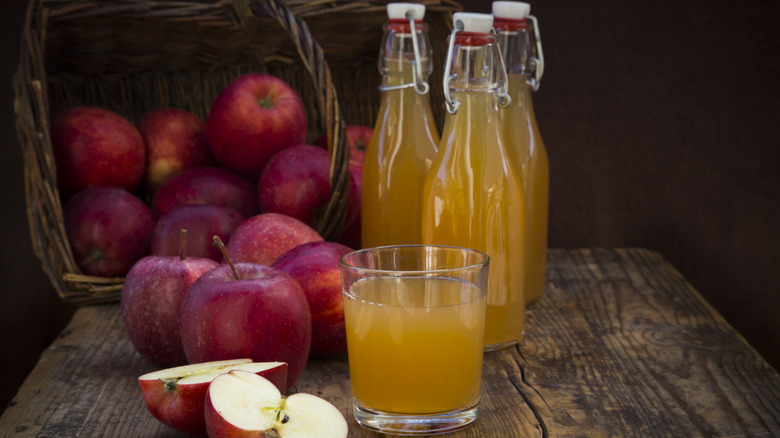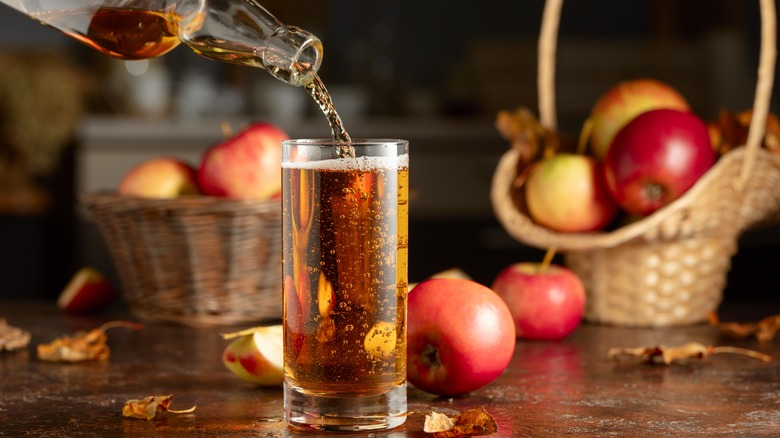Why You Should Be Wary About Drinking Apple Cider This Fall
We may receive a commission on purchases made from links.
As the leaves begin to change and we all bust out our favorite flannels, one fall treat might call for a second look before you sip. We're talking about apple cider, which is often served fresh from the orchard, unfiltered and unpasteurized. Health officials, such as the Ogle County Health Department, are reminding us that unpasteurized cider can come with serious health risks.
Whether you're adding booze to cider before warming it up or having a glass after a day of apple-picking, unpasteurized juices can contain harmful bacteria that can cause severe illness. This is especially true for vulnerable groups such as babies and younger kids, pregnant people, older folks, and people who are immunocompromised. If you fall into one of these categories, drinking unpasteurized apple cider could cause more harm than seasonal joy.
To stay safe, be sure to check if your apple cider has been pasteurized. Most apple orchards don't pasteurize their cider, as this isn't required. The law does require packaged products to carry a warning label if they haven't been treated for safety. If you're drinking cider by the glass at an orchard or farmers market, though, you should ask if it's been pasteurized since by-the-glass sales don't have to include a warning label.
Stay safe this season by following the FDA's juice safety guidelines
Over the years, the FDA has received reports of food poisoning linked to untreated juices, prompting the agency to publish a guide on juice safety. It claims that pasteurization (or an alternative treatment) is key to eliminating dangerous bacteria that could be lurking in fresh juices.
The agency recommends that shoppers check for warning labels, especially when buying juice from roadside stands, farmers markets, or orchards. If you're buying your juice or cider from the store, it's probably already pasteurized and should say so on the container (especially if it's not refrigerated). Check out our ranking of grocery store apple ciders if you plan on sticking to commercially prepared ciders this season.
If you're making fresh juice or cider at home, like our small-batch apple cider recipe, the FDA suggests taking extra steps to ensure food safety. This includes thoroughly washing and drying all fruits before juicing (consider keeping a produce brush on hand like this OXO Good Grips vegetable brush) and using a home-pasteurization method, such as heating the juice to at least 160 degrees Fahrenheit to kill off bacteria. For hands-free temperature monitoring, this ThermoPro digital candy thermometer can clip onto the side of your pot. Whether your juice is store-bought or homemade, following these tips can help keep everyone safe while they enjoy seasonal treats.

